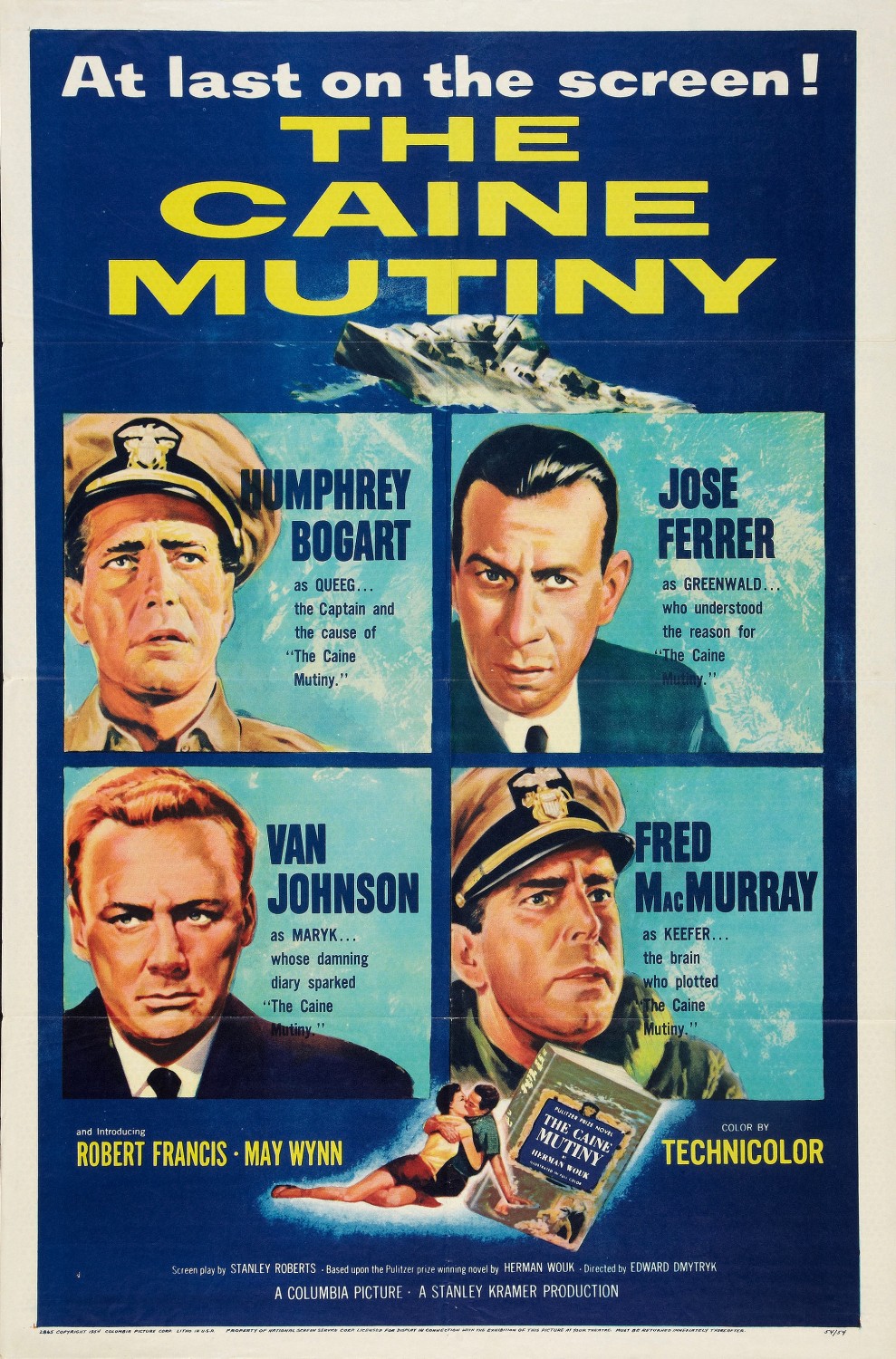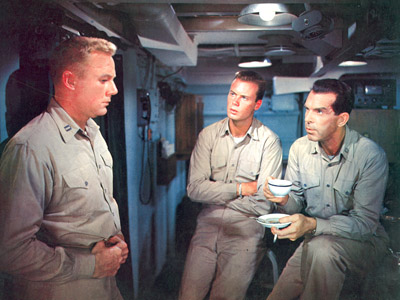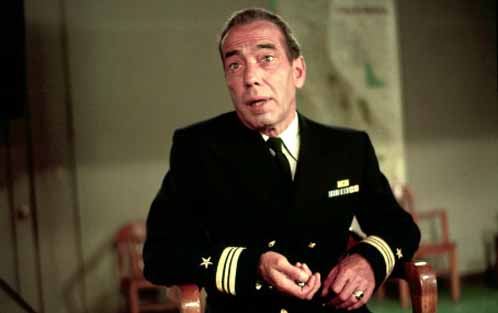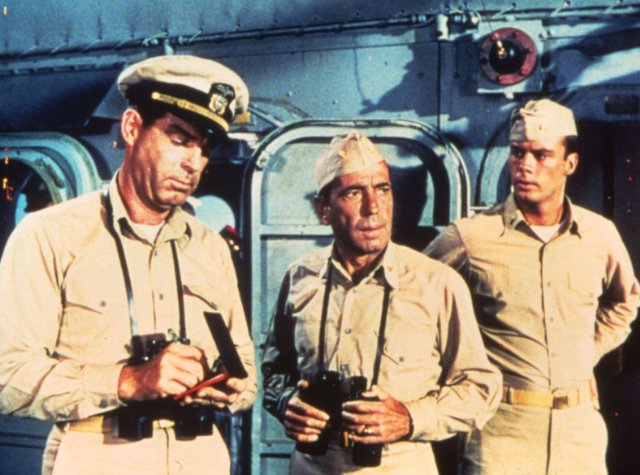The Caine Mutiny, courtroom drama set in the eraly days of WWII, based on Herman Wouk’s novel “The Cain Mutiny Court Martial.”

Humphrey Bogart gives one of his strongest performances–for which he received his third and last Oscar nomination–as Captain Queeg, a presumably firm and tough officer in charge of a U.S. Navy destroyer-cum-minesweeper.
For a superlative courtroom drama, please read our review of Lumet’s “12 Angry Men” (aka “Twelve Angry Men”):
emanuellevy.com/wp-admin/post.php?post=39222&action=edit
As soon as Queeg boards the ship as the new commander, he establishes his rigid power style as well as insecurities. Later on, under pressure during a typhoon, Queen panics and the clashes begin over issues of authority. As a result, Queeg is relieved of duty by Lieutenant Maryk (Van Johnson), with the support of his officers.
In his book, which was also done as a play, Wouk condemns the snide Captain Keffer (Fred McaMurray), who has been steadily undermining the crew’s confidence in Captain Queeg.
Jose Ferrer (who won an Oscar for “Cyrano de Bergerac”) plays Lt. Barnet Greenwald, who’s appointed to defend Maryk at the court-martial. The movie tries to play it both ways, and in the incoherent ending, we hear Greenwald denouncing Keefer’s undermining of Queeg’s authority, and praising Queeg for “standing guard over this fat, dumb, happy country of ours.”

Since this is a male dominatd movie, and the filmmakers did not want to alienate female viwers, the story also containes a romantic subplot, played by Robert Francis and May Wynn. Minor and uninvolving to a fault, this angle is more distracting than enhancing the dramatic proceedings. (Trivia: May Wynn’s screen name is the name of her character in this picture).
Both “On the Waterfront” and “The Caine Mutniy” were made by the same company, Columbia, prompting some critics to claim that the studio promoted much better Kazan’s more prestigious work, which indeed ultimately swept the largest number of Oscar nominations and awards.
Commercially, though, “Caine Mutiny” was more popular than “On the Waterfront”; it was one of the year’s top-grossing pictures.
Wouk’s play has been continuously produced for fifty years. The first stage production starred Lloyd Nolan, and every actor of stature has wanted to play Captain Queeg in a work that offers half a dozen strong male parts.
In an emotionally tense, atypically complex performance, Bogart deviates from his established screen image, revealing vulnerable and even neurotic sides to his persona not seen in other screen roles. Most viewers remember the scene of Captain Queeg rolling those marble-size steel balls in his fist as he disintegrates on the witness stand. Some of these scenes have entered into American film folklore, and are often played in Bogart retrospectives. Asked how he prepares for the role, particularly the paranoid personality, Bogey is reported to have said: “Very simple. Everybody who has met me know I can be nuts.”
Tom Tully, who received a Supporting Actor nomination, also excels as Captain DeVriess, the sloppy captain who preceded Queeg. The whole male-dominated ensemble is strong, from the always-reliable MacMurray and E. G. Marshall to the seldom-reliable Van Johnson.

Actor Alert
Lee Marvin can be seen in a small role, as Meatball, almost a decade before he became a bona fide star and Oscar winner (Cat Ballou, 1965).



